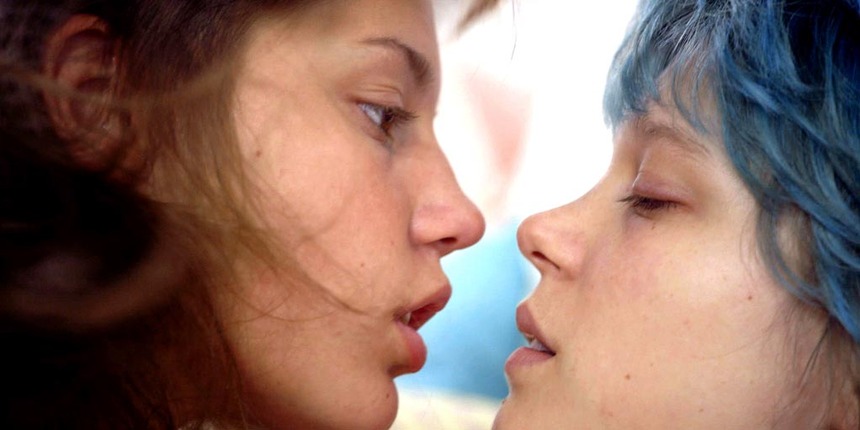Cannes 2013 Review: BLUE IS THE WARMEST COLOR Does Coming-Of-Age With Phenomenal NSFW Aplomb

There is a stereotype that used to exist in America that European (and especially French) films were all full of gratuitous sex. Back before the internet, VHS tapes, and days of easy access pornography, young boys would sneak into art house cinemas to get a look at those lovely bare bodies from across the Atlantic. Whether any of this is accurate, the stereotype made its cultural impact and somehow extremely graphic sex scenes in French films are greeted with slightly less shock by the typically more puritanical American public. Well, dust off those old theater blueprints, boys and girls, Abdellatif Kechiche's Blue Is The Warmest Color (aka La Vie D'Adele) is one of the most shockingly explicit features to cross the pond in quite some time. Oh, and it's also one of the best films of the year.
First things first, don't allow yourself to be discouraged by the film's daunting 187-minute runtime. This is a story that spans a number of years in a young girl's life and it earns its length by drawing you into the character early. That character is Adele and she is played exquisitely by Adele Exarchopoulos. Starting out in high school, we get to know Adele as her character is built through a series of mundane morsels: Adele is quiet but well liked; she is always running late; she loves to eat and does so boorishly, therefore she has never quite shed those extra few pounds from adolescence. Kechiche puts his camera right in Adele's face. This, paired with Exarchopoulos's perfectly subtle gestures, leaves us soon thinking, feeling, and reacting right alongside Adele. Therefore, when the real drama starts to build, the ramifications are intensely personal.
This drama takes the shape of a love story, only this love story isn't the kind we've so often seen between teens. After an encounter with a goateed classmate who all her friends think is handsome, Adele starts to realize that something might be wrong. She struggles with why she doesn't like this guy as much as she should, dancing around the truth as she simultaneously ignores a sexual attraction towards one of her female friends. This treatment of identity, confusion, and denial is some of the best and most personal storytelling that can be found. Adele doesn't know if she is gay. She doesn't even know what it means to be gay. But she can tell that something inside her is different -- and as it evolves, we go right along for the ride of its powerful manifestation.
The manifestation comes to its full fruition when Adele meets Emma. This titular blue-haired girl is played with equal accomplishment by Lea Seydoux. More comfortable with her sexual identity than Adele, Emma recognizes in the younger girl a budding maturity whose petals are just beginning to separate. She is immediately and powerfully drawn to Adele. This is magical coming-of-age movie romance at its best and the scenes when Adele and Emma first start to fall are some of the film's best.
When the girls do fall, they fall fast and hard -- right onto Emma's mattress. The sex scenes are both passionate and primal and very, very realistic. Whether or not these girls are acting, there is little doubt that they are indeed having sex. No clever camera angles are used here and the scenes go on far longer than you might expect. But as raw as the sex is, it is far from exploitative and never voyeuristic. Kechiche earns the sex scenes through the characters he has developed. It's the culmination of these two women's love and it is incredibly powerful.
Given the film's extensive runtime, the story continues from these early days of love and lust in ways better left unspoiled. Suffice to say that Emma remains a constant force in Adele's life, though the acceptance of her love for another woman is far from the end to Adele's questions of identity. As time goes on, Exarchopoulos does a remarkable job of subtly changing physically both in appearance and manner to mirror Adele's emotional journey. Adele stays every bit as engaging and that emotional journey remains just as deserved throughout.
Subtitled in French as "Chapters 1 and 2," the door is open for more of Adele's story. While Kechiche has said no further chapters have yet been written, success such as winning Cannes's Palme d'Or could convince his team and him to revisit this world sometime soon. I say bring on Chapters 3 and 4. With characters this authentic, it would be a shame to let them slip away forever. Plus, how else are adolescent kids in America going to see what sex is really like?
IFC/Sundance Selects acquired Blue Is The Warmest Color at the Cannes Film Festival where it won the festival's top prize Palme d'Or.







